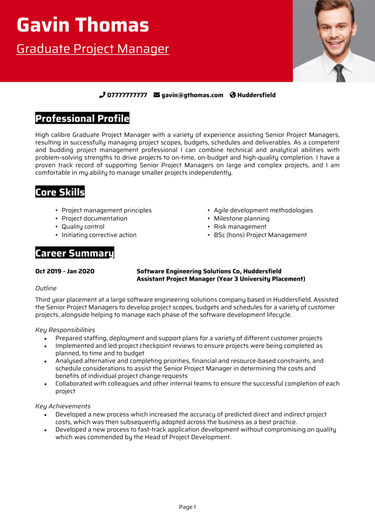You’ve managed schedules, handled logistics, resolved conflicts, and probably negotiated more deals than a boardroom full of execs – just not all of it’s been paid.
If you’re ready to return to the workforce after time away raising a family, your CV needs to highlight everything you have been doing, not just what you haven’t.
This guide, complete with Stay-at-Home Mum example CV, will help you bridge the gap between home life and the workplace, and show employers the real value you bring.
Stay-at-Home Mum CV example
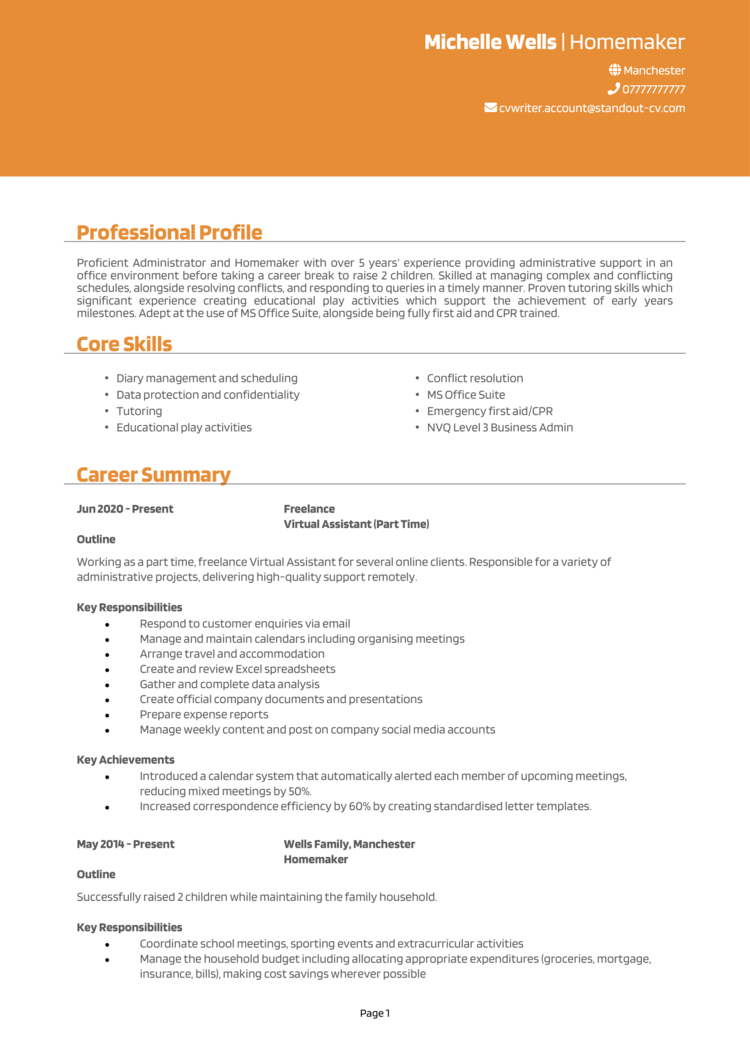
How to write your Stay-at-Home Mum CV
Discover how to craft a winning Stay-at-Home Mum CV that lands interviews with this simple step-by-step guide.
Taking time away from the workforce doesn’t make your skills disappear. In fact, many employers value the multitasking, planning, and resilience that come from managing a household or raising children – especially when paired with professional experience.
This guide will help you write a CV in a way that acknowledges your career break while showcasing your strengths, transferable skills, and readiness to return to work.
The best way to structure and format your Stay-at-Home Mum CV
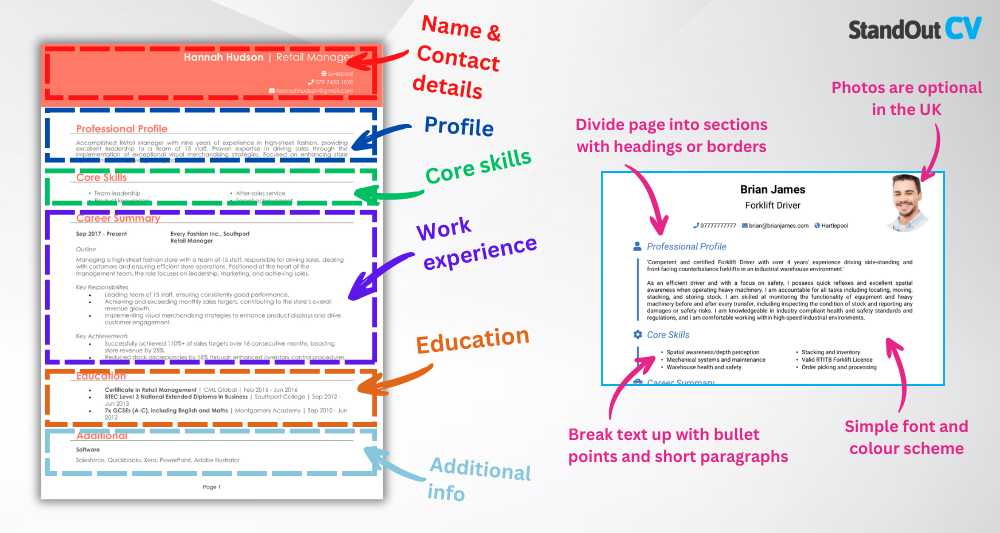
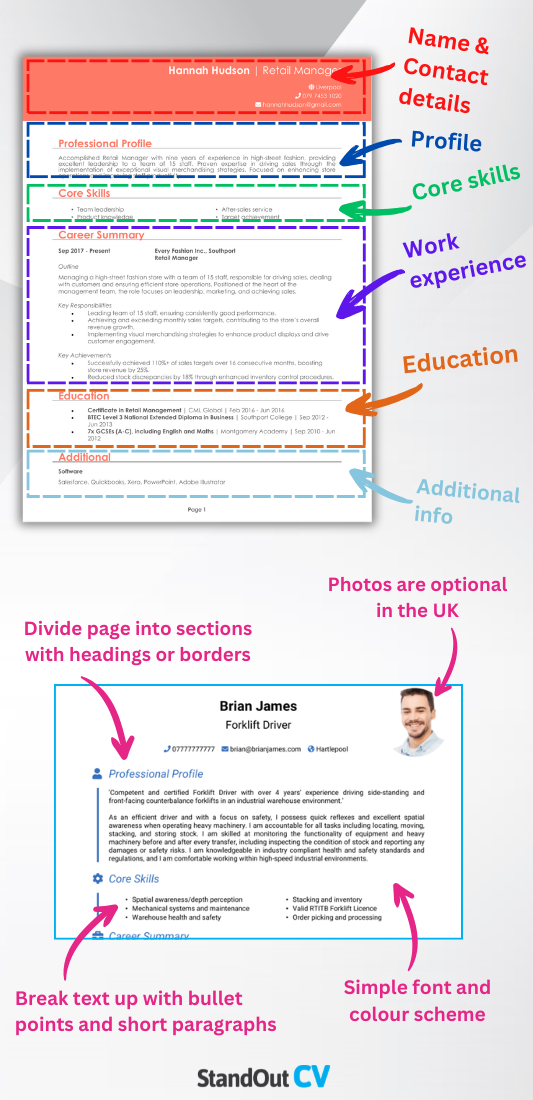
A clear, well-organised CV makes it easy for recruiters to see how your previous work experience – and your time as a stay-at-home parent – make you a valuable hire. It’s not about glossing over your career break; it’s about showing how your strengths remain highly relevant.
Here’s the way your CV should be laid out:
- Name and contact details – Add personal info to the top of your CV so employers can easily reach you. No photo necessary.
- Profile – A short summary of your professional background, current goals, and the value you offer.
- Core skills – Bullet point transferable and job-relevant strengths such as organisation, communication, or time management.
- Work experience – List past jobs in reverse chronological order, and consider including your time as a stay-at-home mum with relevant skills or responsibilities.
- Education & certifications – Go through your academic background and any courses or training, including any completed during your career break.
- Additional info – Optionally include volunteering, hobbies and interests, or additional roles such as PTA involvement or freelance work.
Use bullet points for readability, keep your formatting clean and professional with a simple font, and limit your CV to a maximum of two pages of length. You want to give recruiters as pleasant and easy a reading experience as possible: cohesive formating free from errors will accomplish just that.
What is a Stay-at-Home Mum CV profile?
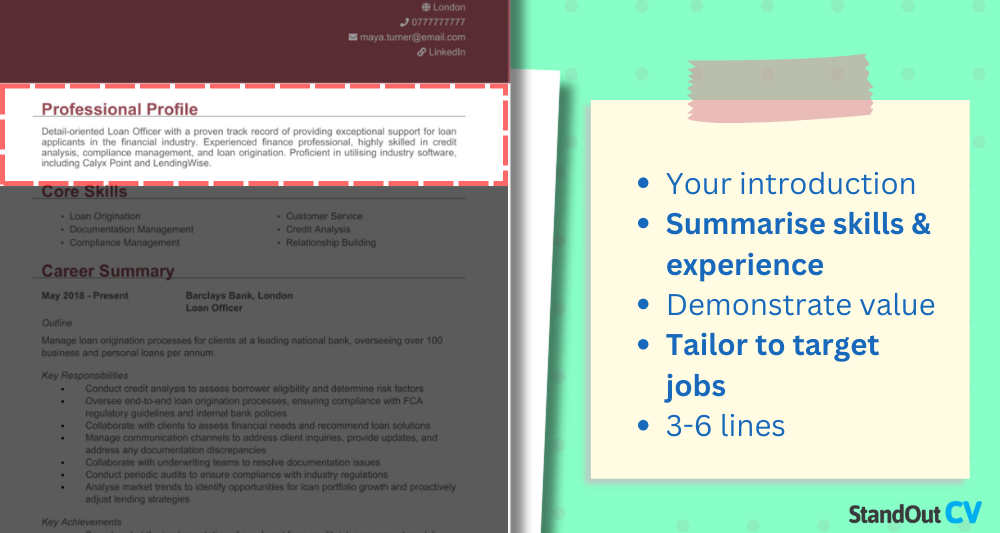
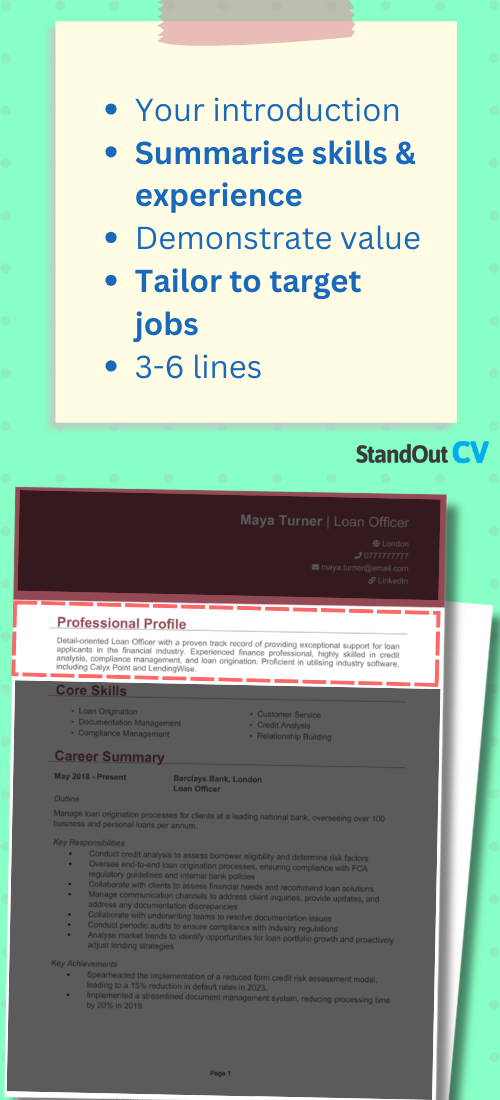
This section is your opportunity to make a strong first impression and shift focus toward what you can offer – not what you’ve been away from. A profile should confidently highlight your strengths, experience, and current career goals.
You want to make recruiters see the value you’d have, and what benefits there’d be to hiring you. Here’s a useful tip: if you’ve been out of work for a while, you should consider attaching a cover letter to your application to allow you to go into more depth.
Stay-at-Home Mum CV profile examples
Profile 1
Organised and resourceful worker returning to the workforce after a career break to raise a family. Brings a wealth of transferable skills including time management, multitasking, budgeting, and conflict resolution. Eager to apply these strengths in a professional setting and committed to continuous learning and personal development.
Profile 2
Motivated and reliable worker transitioning back into employment after several years as a full-time parent. Experienced in managing complex schedules, coordinating family logistics, and adapting quickly to new challenges. Enthusiastic about rejoining the workforce and applying organisational and communication skills in a new role.
Profile 3
Dedicated and efficient professional returning to the job market following a period of full-time caregiving. Possesses strong planning, problem-solving, and interpersonal abilities developed through managing a busy household. Ready to contribute to a supportive team and learn new systems with enthusiasm and flexibility.
Details to put in your Stay-at-Home Mum CV profile
Here’s what to add to your CV profile:
- Career background – Briefly reference your previous professional experience.
- Time away from work – Acknowledge your career break and position it as a time of development and learning.
- Transferable strengths – Mention qualities like organisation, resilience, communication, or multitasking.
- Career goal – Clearly state the type of role or industry you’re returning to, showing your enthusiasm and direction.
How to highlight your core skills
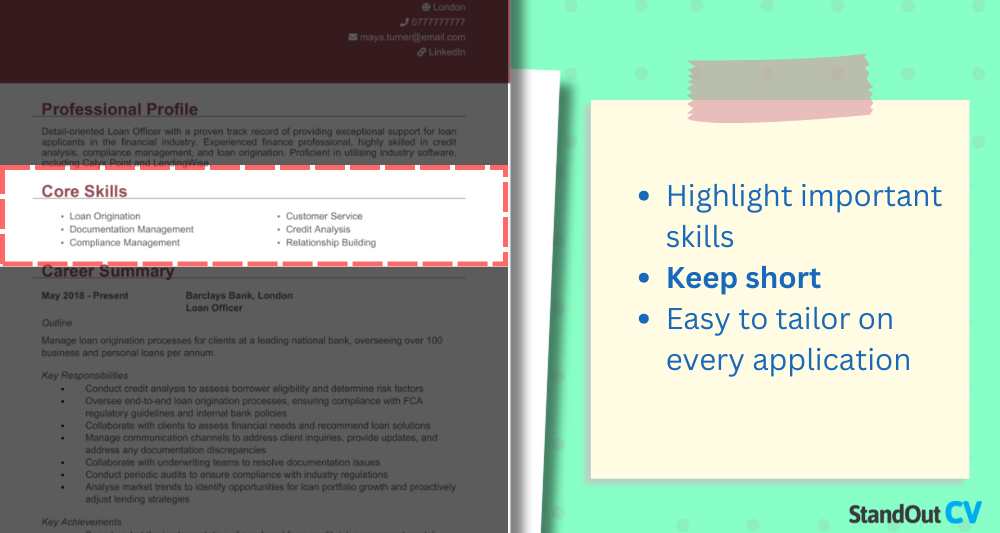

Let’s face it: if you can handle a weekly family schedule without losing your mind, you can handle most admin roles.
This section is your chance to highlight the transferable skills and professional strengths that are still very much relevant – even if you haven’t used them in an office recently.
Focus on the qualities that employers value, whether developed in a previous job or refined through parenting. These CV skills might include problem-solving, budgeting, planning, interpersonal communication, or flexibility. Tailor the list depending on the kind of role you’re applying for.
Essential skills for a Stay-at-Home Mum CV
- Household Management – Organising daily routines, coordinating schedules, and ensuring the smooth running of household tasks.
- Budgeting and Financial Planning – Managing household expenses, shopping efficiently, and planning budgets to support family needs.
- Time Management and Multitasking – Balancing multiple responsibilities, including childcare, household duties, and personal commitments.
- Child Development Support – Promoting emotional, physical, and cognitive development through play, education, and care.
- Meal Planning and Nutrition – Preparing balanced meals, planning weekly menus, and accommodating dietary needs.
- Conflict Resolution and Patience – Handling challenges calmly, resolving disputes, and supporting family members through emotional situations.
- Organisational Skills – Keeping records, planning family activities, and maintaining a structured and productive home environment.
- Teaching and Homework Assistance – Supporting children’s education through learning activities, reading, and homework help.
- Health and Safety Awareness – Maintaining a clean and safe environment for children and ensuring adherence to health practices.
- Communication and Interpersonal Skills – Engaging effectively with children, partners, teachers, and healthcare professionals.
How to showcase your work experience in your CV
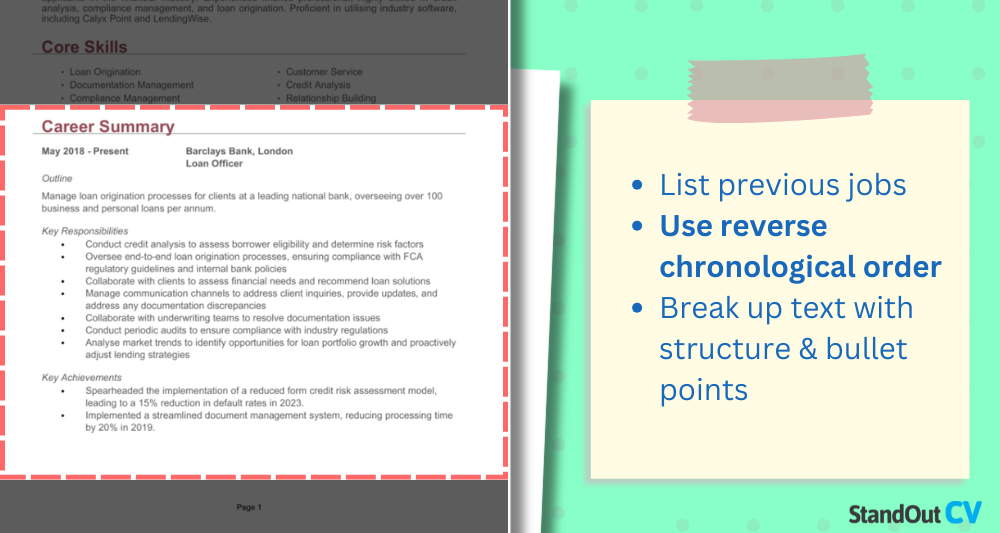
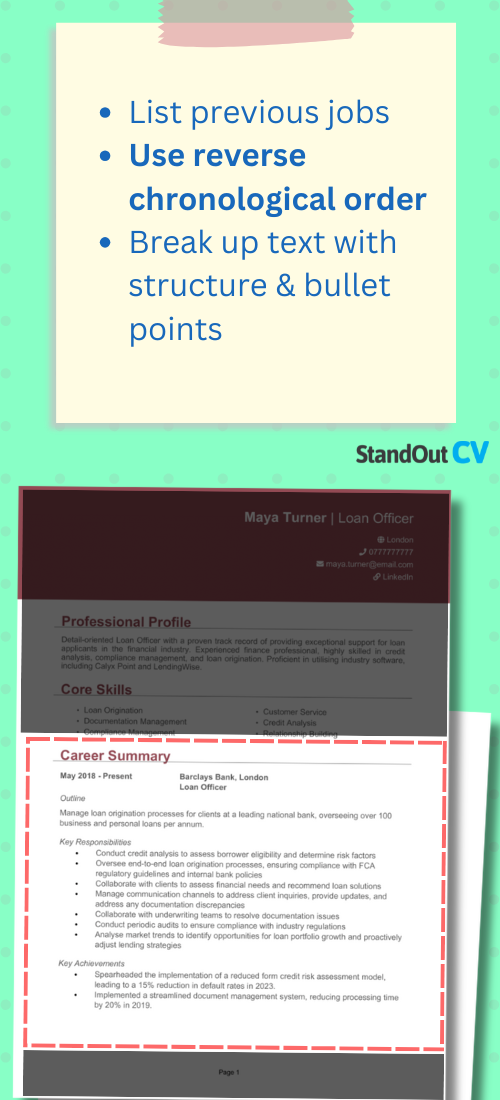
Your work experience still matters – regardless of when your last job was. Structure your roles in reverse chronological order, including job title, company name, dates, and a brief summary of what you did. You can also include your time as a stay-at-home mum, especially if it involved relevant responsibilities like organising events, budgeting, volunteering, or freelance projects.
If there’s a gap, don’t hide it – explain it confidently and keep the focus on what you learned and how you’re ready to return to work. But don’t let that so-called “career gap” fool anyone – you’ve worked some of the busiest shifts known to humankind!
How to format previous jobs in your CV correctly
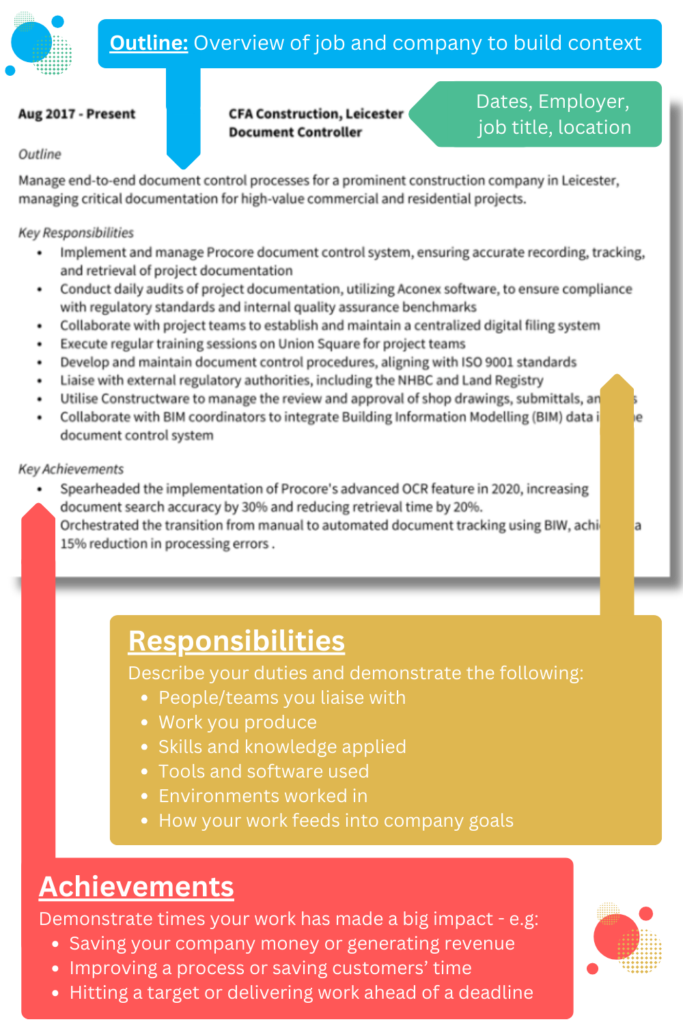
- Outline – Introduce the role, the organisation, and the period of employment (or time at home).
- Responsibilities – Describe your key tasks and contributions. Use power words like “organised,” “coordinated,” or “supported.”
- Achievements – Mention positive outcomes, successful projects, or relevant learning – even during your time at home.
Example work history for Stay-at-Home Mum
Homemaker
Outline
Managed the daily operations of a household and provided full-time care for young children, developing a wide range of transferable professional skills.
Responsibilities
- Organised and maintained routines for multiple children, including school runs, appointments, and extracurricular activities.
- Managed household budgets, tracked spending, and coordinated cost-saving measures.
- Scheduled and prioritised competing tasks while maintaining a calm and efficient environment.
- Communicated effectively with schools, healthcare providers, and other parents.
- Developed strong problem-solving and crisis management skills in fast-paced situations.
Achievements
- Successfully balanced complex family schedules, improving time efficiency.
- Reduced household costs by 20% through budget monitoring and careful planning.
- Volunteered at a local school, supporting reading groups and assisting with events.
Volunteer | Westbrook Primary School PTA
Outline
Supported the school’s parent-teacher association through event planning and community engagement while on a career break.
Responsibilities
- Organised school fundraising events including fairs and raffles, managing budgets and logistics.
- Collaborated with other parents and staff to plan and execute community initiatives.
- Promoted events through social media and print materials, increasing attendance and participation.
- Assisted with classroom activities and reading support on a weekly basis.
- Maintained detailed records of expenses and supported financial reporting.
Achievements
- Raised over £1,200 through a coordinated school fundraiser.
- Helped increase PTA membership through improved communication and outreach.
- Received praise from teachers for reliability and initiative.
Freelance Administrator (part-time) | Self-employed
Outline
Completed ad-hoc administrative work from home for a local business while managing family responsibilities.
Responsibilities
- Handled email correspondence and appointment scheduling on behalf of a sole trader.
- Created and maintained spreadsheets to track customer orders and payments.
- Filed and organised digital documents, ensuring GDPR compliance.
- Responded to customer queries and followed up on outstanding invoices.
- Balanced admin duties with childcare and household tasks.
Achievements
- Helped streamline client communication, improving response time by 30%.
- Maintained consistent accuracy in data entry and record keeping.
- Recognised by client for dependability and discretion.
Structuring your education section
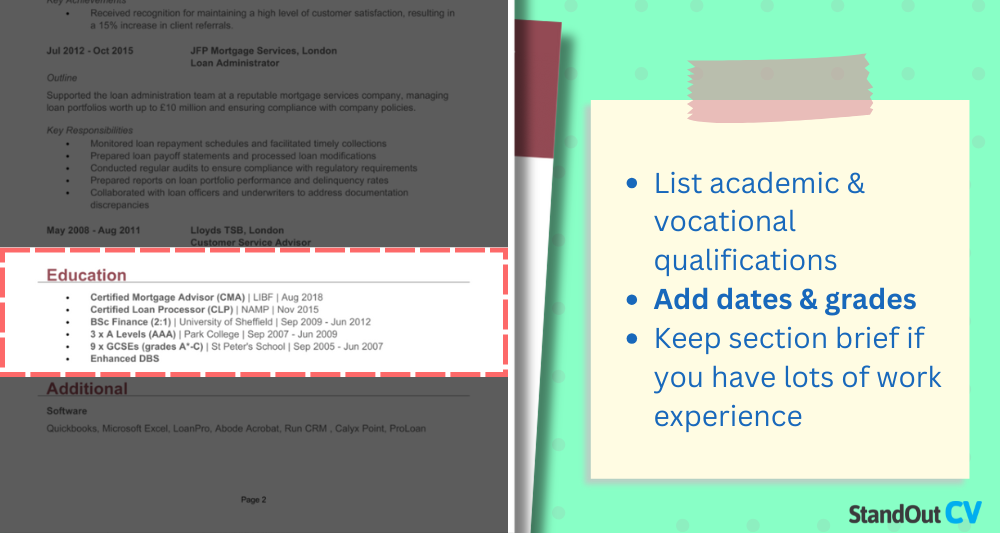

Education becomes even more important when returning from a career break, so this section can help reassure employers of your knowledge and commitment. List your qualifications clearly in reverse chronological order.
If you’ve taken any courses during your time at home – whether to upskill, retrain, or refresh – include those here too. It shows initiative and an eagerness to learn. Keep this part concise, and try to focus on work experience.
Top qualifications to showcase on a Stay-at-Home Mum CV
- GCSEs and A-Levels (or equivalent) – Still relevant, especially when returning after a longer break.
- University Degree or Higher Education Diploma – Adds strength and context to your professional background.
- Return to Work Programmes (e.g. CIPD, STEM Reignite, etc.) – Showcases focused development.
- Online Courses (e.g. digital skills, admin, finance, customer service) – Demonstrates initiative and learning during time away.
- First Aid or Safeguarding Training (especially for childcare, education, or support roles) – Useful for specific industries and voluntary roles.





